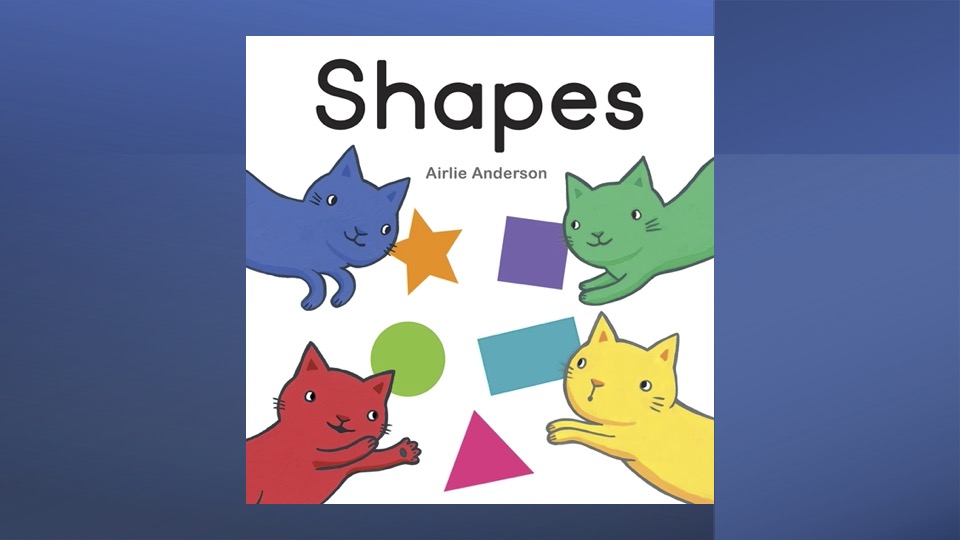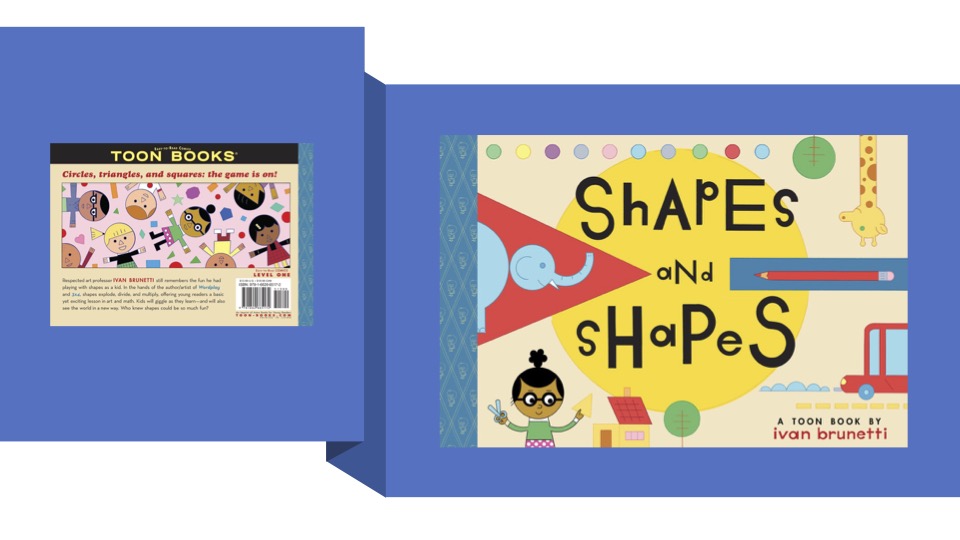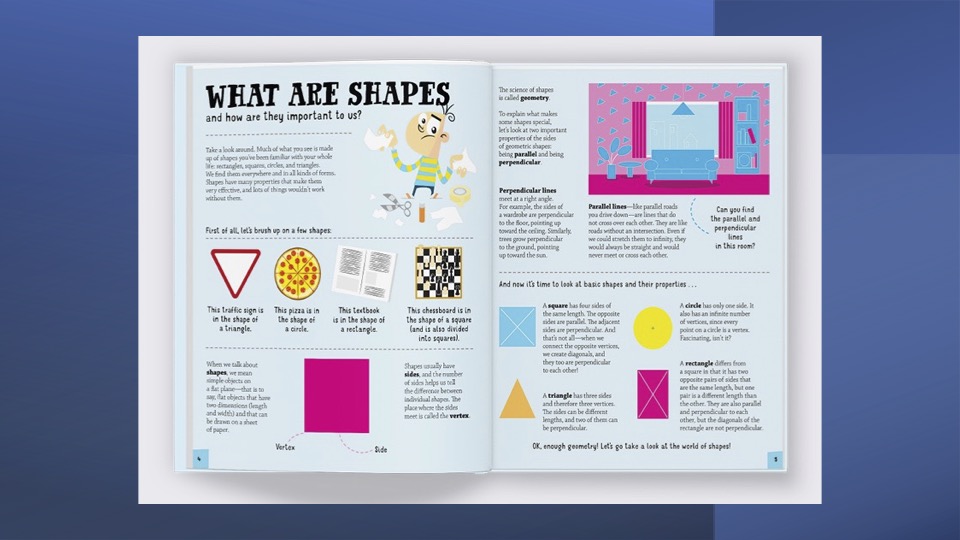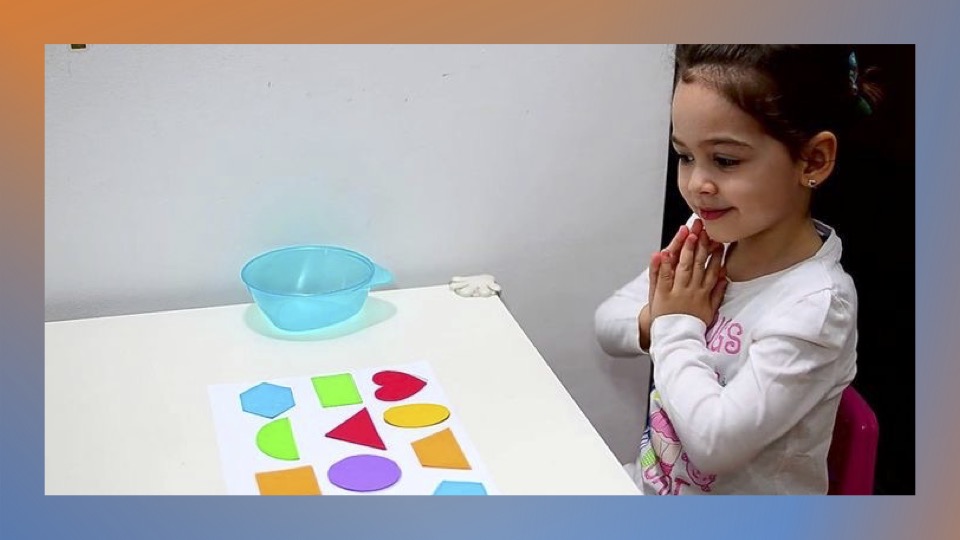This has shaped up to be a good year for new kids’ books that focus attention on—shapes! Some shapes—and books—are simple, some simply fun (as well as informative), and some sophisticated—just the way geometric forms run the gamut from easy to grasp to complex. Learning to recognize and name shapes helps build the toddler, preschooler, and early elementary age child’s capacity to acquire vocabulary, recognize patterns, understand relationships between two or more things and even between one object (or person) and the space around it (or them). Let’s get organized by exploring the power of shapes in daily life as well as in the classroom.

Child’s Play Books, well known for presenting babies and toddlers with early learning experiences through colorful and engaging board books, presents a new series called “Curious Cats” from artist Airlie Anderson that includes Shapes. With bold colors and clear lines, the simple text can serve as a prompt for comparing and contrasting each scene with objects at hand to caregiver and lapsitting audience. Five basic shapes are presented in 14 pages: circle, square, triangle, rectangle, and star. Trace the shapes on the page, make the shape with your hands, find the shape in your toy box.

Shapes and Shapes, by graphic artist Ivan Brunetti and published by Toon Books, shows as well as tells—and most importantly, engages beginning readers in the game of exploring shapes, dimension, and the interplay both art and math invite when shapes are combined. Everyday objects (and people’s bodies and faces, too) have shapes. Find the shapes in your world and have fun mixing them together to make an imaginary world, too!
Readers have a pair of new shape-focused books from Albatros Books that will bring new eyes—and pattern-recognition—to their surroundings. Shapescapes, written by Magda N. Garguláková and Štěpánka Sekaninová, and illustrated by Lukáš Fibrich, can be entertaining for children as young as three while also offering page spreads that can occupy early elementary school children in the detailed scenarios that go beyond shape recognition to include story suggestions. There’s a seek and find element, too!
Also from Albatros Books, Shapes, Shapes Everywhere, written by Lenka Chytilová and illustrated by Gary Boller, takes shape exploration up another age level further. Here readers are invited to consider how we use shapes in communication, in presenting ourselves visually to others, and more real-world situations in which shapes play an essential role. With this title, we move from the specific instance to the symbolic—a brilliant metaphor for how maturing children’s minds are expanding from recognizing the concrete to understanding the abstract.

Learning shape names (octagon), properties (eight sides), and cultural associations (stop sign) support children’s readiness for both activities and intellectual engagement. Shape awareness is important to mathematical readiness, of course, but the shape recognition informs every aspect of daily life.
